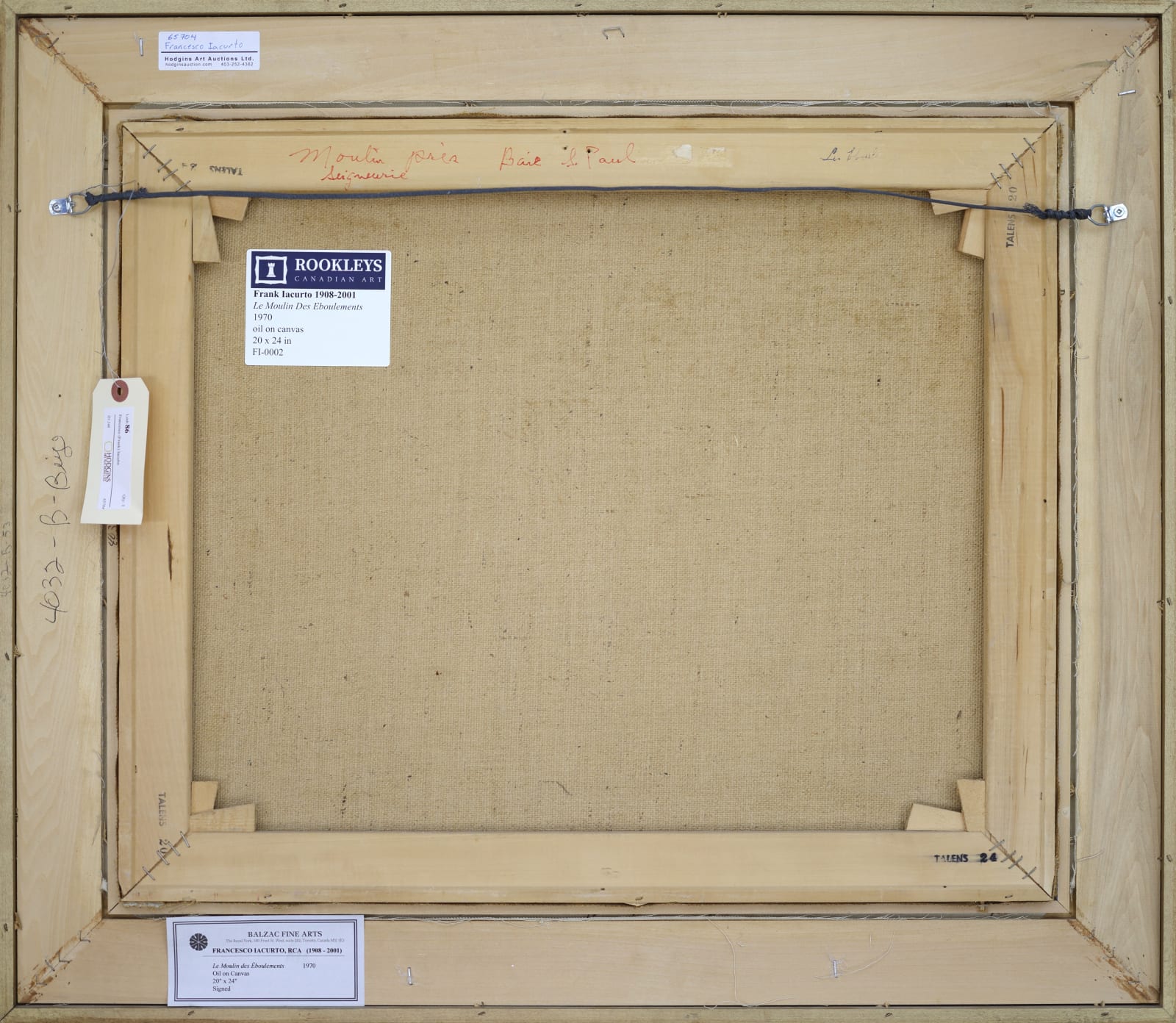Francesco Iacurto Canadian, 1908-2001
Further images
Le Moulin des Éboulements (1970) by Francesco Iacurto is a vibrant oil on canvas that captures the charm and historic character of rural Quebec. The painting depicts the iconic windmill of Les Éboulements, a picturesque village nestled in the rolling hills of the Charlevoix region. Iacurto’s use of bold brushwork and rich, saturated colour gives life to the old stone mill and the surrounding landscape, where light dances across fields, rooftops, and sky with a rhythmic energy that feels both timeless and distinctly Quebecois.
Francesco Iacurto (1908–2001) was a celebrated Canadian painter known for his luminous interpretations of Quebec’s rural and urban scenery. Born in Montreal, he trained at the École des Beaux-Arts in Quebec and later at the prestigious Académie Colarossi and École des Beaux-Arts in Paris. His work often explores the architectural and cultural heritage of Quebec, and Le Moulin des Éboulements is no exception, offering a visual homage to a region that has long inspired artists with its unique blend of natural beauty and historic preservation.
The Charlevoix region, and Les Éboulements in particular, has been a favourite destination for generations of Canadian painters. The historic windmill featured in this painting has appeared in works by renowned artists such as Clarence Gagnon and Albert H. Robinson, who helped establish the area as an iconic subject within Canadian Impressionism. Iacurto’s interpretation continues this artistic tradition while infusing it with his own modern, expressive style.
With its vivid colour, cultural resonance, and confident execution, Le Moulin des Éboulements stands as a fine example of mid-20th-century Quebec landscape painting. It not only captures the visual beauty of a specific place but also expresses the deep sense of identity and memory rooted in the Quebec landscape. This piece measures 20 x 24 inches and is signed and dated in the lower right.






